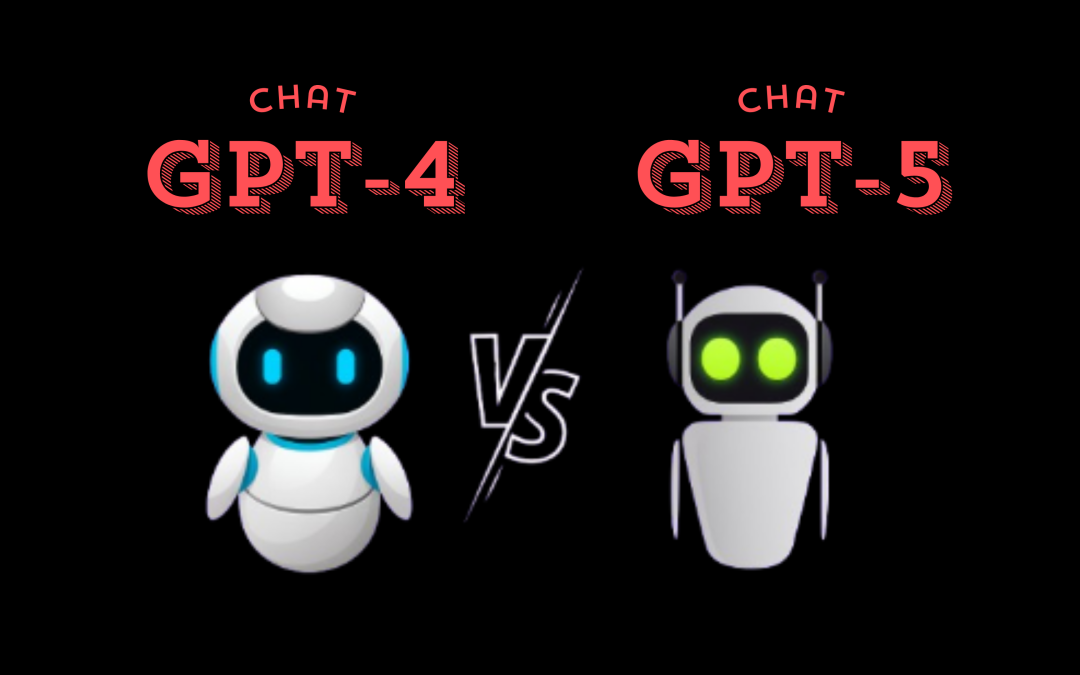
by Shashikanth Heerekar | Aug 8, 2025 | Artificial intelligence
Explore the key differences between ChatGPT-4 and ChatGPT-5, including speed, accuracy & reasoning. See how GPT-5 outperforms GPT-4 in AI capabilities.
Introduction to the Evolution of AI Chatbots
The world of artificial intelligence has witnessed remarkable progress in recent years, with OpenAI’s ChatGPT models leading the charge. When ChatGPT-4 was released, it set new standards for what conversational AI could achieve, demonstrating impressive capabilities in natural language understanding, creative tasks, and technical problem-solving. Now, with the arrival of ChatGPT-5, we’re seeing another quantum leap in AI technology that pushes the boundaries even further.
In this in-depth comparison between ChatGPT-4 and ChatGPT-5, we’ll explore every aspect of these two powerful AI models. From their fundamental architectures to their real-world performance across various tasks, this analysis will help you understand exactly how ChatGPT-5 improves upon its predecessor and whether upgrading makes sense for your specific needs. The differences go beyond simple metrics – we’re looking at how these models think, reason, and interact with users in fundamentally different ways.
First Impressions: Experiencing Both Generations
My Initial Experience with ChatGPT-4
When I first gained access to ChatGPT-4, it felt like stepping into the future of human-computer interaction. The model demonstrated an uncanny ability to understand context, maintain coherent conversations across multiple turns, and generate surprisingly creative content. I remember testing it with complex programming questions and being amazed at how it could not only explain concepts but actually write functional code snippets. The multilingual capabilities were particularly impressive, allowing for relatively seamless conversations across different languages.
However, even in those early days of excitement, certain limitations became apparent. The model would occasionally provide confidently stated but incorrect information, a phenomenon known as “hallucination.” More complex reasoning tasks sometimes required careful prompt engineering to get optimal results. There were noticeable delays in response times during peak usage periods, and the model could struggle with maintaining context in very long conversations.
The Moment I First Used ChatGPT-5
The transition to ChatGPT-5 was immediately noticeable from the very first interaction. The response time felt significantly faster, even when handling complex queries. But more importantly, the quality of responses had taken a qualitative leap forward. Where ChatGPT-4 sometimes felt like a very advanced chatbot, ChatGPT-5’s responses carried more nuance and depth, often anticipating follow-up questions before I even asked them.
One of my first tests was asking both models to explain a complex scientific concept at different levels of understanding – from elementary school to graduate-level comprehension. While ChatGPT-4 performed admirably at this task, ChatGPT-5 demonstrated superior ability to truly tailor explanations to the specified knowledge level without oversimplifying or using inappropriate jargon. This suggested significant improvements in the model’s understanding of user intent and contextual adaptation.
Understanding ChatGPT-4’s Capabilities and Constraints

Where ChatGPT-4 Excelled
ChatGPT-4 represented a major advancement in AI language models when it was released. Its ability to understand and generate human-like text across a wide range of topics made it invaluable for numerous applications. The model showed particular strength in creative writing tasks, capable of generating coherent stories, poems, and even screenplays with consistent tone and character development. For technical users, its coding assistance capabilities were revolutionary, able to explain programming concepts, debug code, and even suggest optimizations.
The multilingual support in ChatGPT-4 was another area where it shone brightly. While not perfectly fluent in all languages, its ability to maintain context and provide reasonably accurate translations between languages opened up new possibilities for global communication. Business users found it particularly useful for drafting emails, creating reports, and analyzing data – tasks where its ability to understand context and follow instructions proved invaluable.
The Limitations That Became Apparent
Despite its impressive capabilities, extended use of ChatGPT-4 revealed several consistent limitations. The model’s knowledge cutoff meant it couldn’t provide information about events or developments after its training period. More concerning was its tendency to occasionally generate plausible-sounding but factually incorrect responses, especially when dealing with niche topics or less common knowledge areas.
Another significant limitation was its handling of complex, multi-step reasoning problems. While it could often solve individual components of a problem correctly, maintaining logical consistency across an extended chain of reasoning sometimes proved challenging. Users also reported that getting the best results often required careful prompt engineering – crafting questions in specific ways to elicit the desired response quality.
ChatGPT-5: The New Frontier in Conversational AI

Key Advancements and Innovations
ChatGPT-5 represents a substantial evolution in AI capabilities, building on the foundation of ChatGPT-4 while addressing many of its limitations. One of the most immediately noticeable improvements is in response quality and coherence. The model demonstrates significantly better understanding of nuanced queries and can handle complex instructions with greater accuracy. This is particularly evident in technical domains where precision is critical.
Perhaps the biggest gain has been in reasoning abilities. ChatGPT-5 can follow extended logical chains more reliably, make appropriate inferences, and even recognize when it needs to ask clarifying questions rather than make assumptions. This leads to more accurate and useful responses, especially in professional contexts where incorrect information could have serious consequences.
Personal Observations from Extensive Testing
Having used ChatGPT-5 extensively across various applications, several consistent improvements stand out. The model’s ability to maintain context in long conversations is markedly better, reducing the need for constant repetition or clarification. In creative tasks, it demonstrates more sophisticated understanding of narrative structure, character development, and stylistic consistency.
For technical applications like programming assistance, the improvements are particularly valuable. ChatGPT-5 not only provides more accurate code suggestions but can better explain the reasoning behind its solutions. When debugging, it’s more likely to identify root causes rather than just symptoms, and its suggestions for optimization tend to be more practical and implementation-ready.
Head-to-Head Comparison: ChatGPT-4 vs ChatGPT-5
Performance in Speed and Accuracy
When comparing response times, ChatGPT-5 consistently outperforms its predecessor, especially noticeable when handling complex queries that require substantial computation. More importantly, the quality of these faster responses is superior – ChatGPT-5 makes fewer factual errors and demonstrates better judgment in ambiguous situations. This combination of speed and accuracy makes for a significantly more productive user experience.
In practical testing across various domains, ChatGPT-5 maintains its advantage. Whether answering technical questions, providing creative suggestions, or analyzing complex information, it delivers more reliable results with less need for verification. This reliability boost is particularly valuable in professional settings where accuracy is paramount.
Reasoning and Problem-Solving Capabilities
Among ChatGPT-5’s most notable enhancements are the increases in reasoning abilities. Where ChatGPT-4 might struggle with multi-faceted problems requiring several steps of analysis, ChatGPT-5 demonstrates more methodical and reliable problem-solving approaches. This is evident in everything from mathematical proofs to business strategy development.
A particularly impressive aspect is ChatGPT-5’s improved ability to recognize its own limitations. It’s more likely to acknowledge when it doesn’t have enough information to provide a definitive answer, rather than generating a potentially incorrect response. This metacognitive ability represents an important step forward in AI safety and reliability.
Conversational Flow and Adaptability
The natural flow of conversation with ChatGPT-5 feels noticeably more human-like. The model excels at maintaining appropriate context throughout extended dialogues, picking up on subtle cues, and adapting its responses accordingly. This makes for more productive and enjoyable interactions, especially in complex discussions that span multiple topics.
ChatGPT-5 also demonstrates superior ability to adjust its communication style based on implicit cues. Where ChatGPT-4 often required explicit instructions to adopt a particular tone or level of formality, ChatGPT-5 more naturally matches the user’s style, making the interaction feel more intuitive and less like talking to a machine.
Real-World Application: A Case Study in Coding Assistance
Practical Comparison in Development Work
To truly understand the differences between these models, I conducted an extensive comparison using real-world programming tasks. The test involved debugging a complex Python script with multiple interacting components, optimizing an algorithm, and then explaining the changes to a non-technical stakeholder.
ChatGPT-4 performed competently at these tasks, successfully identifying several bugs and suggesting reasonable optimizations. However, it occasionally missed subtle interactions between different parts of the code and sometimes proposed solutions that, while technically correct, weren’t the most efficient or maintainable approaches. Its explanations for non-technical audiences were good but sometimes included unnecessary technical details.
How ChatGPT-5 Handled the Same Challenges
ChatGPT-5’s performance on the same set of tasks demonstrated clear advancements. It not only identified all the bugs that ChatGPT-4 found but also caught several more subtle issues related to edge cases and error handling. The optimization suggestions were more thoughtful, considering not just raw performance but also code readability and long-term maintainability.
Perhaps most impressive was ChatGPT-5’s ability to tailor its explanations perfectly to the audience. For non-technical explanations, it used excellent analogies and avoided jargon without oversimplifying the core concepts. When asked to provide more technical details for developer documentation, it adjusted seamlessly to include appropriate specifics.
Making the Decision: Should You Upgrade to ChatGPT-5?
Considerations for Casual Users
For those using AI primarily for general knowledge questions, casual conversation, or simple content generation, ChatGPT-4 may still meet most needs adequately. The improvements in ChatGPT-5, while noticeable, might not justify any additional cost or access requirements for these basic use cases. However, the enhanced conversational flow and reliability could still provide a better overall experience even for casual interactions.
Benefits for Professionals and Power Users
For professionals using AI in their work – whether in writing, programming, research, or analysis – the advantages of ChatGPT-5 are substantial enough to strongly consider upgrading. The improved accuracy alone can save significant time in fact-checking and verification. The enhanced reasoning capabilities open up new possibilities for complex problem-solving and decision support.
Developers in particular will appreciate the more reliable coding assistance, while content creators can benefit from the more nuanced understanding of style and audience. Researchers working with complex information will find the improved ability to synthesize and analyze information from multiple sources invaluable.
Final Assessment: Evaluating the Generational Leap
Recognizing ChatGPT-4’s Legacy
It’s important to acknowledge that ChatGPT-4 was and remains a groundbreaking achievement in AI. Its capabilities transformed how many people work with information and automation, setting new expectations for what conversational AI could achieve. Many of its core strengths – the language fluency, creative potential, and technical utility – continue to make it a powerful tool even with ChatGPT-5 now available.
Why ChatGPT-5 Represents a Meaningful Advancement
What makes ChatGPT-5 special isn’t just incremental improvements in existing capabilities, but the emergence of new qualities in AI interaction. The enhanced reasoning, more reliable outputs, and superior contextual understanding create a fundamentally different user experience. It feels less like using a tool and more like collaborating with a knowledgeable partner.
The improvements in safety and reliability are particularly noteworthy. ChatGPT-5’s better judgment about when it knows something versus when it’s speculating, combined with its increased accuracy, makes it suitable for more serious applications where errors could have significant consequences.
Looking Ahead: The Future of AI Chatbots
The advancements in ChatGPT-5 offer a glimpse into AI’s future—with improved reasoning, reliability, and contextual understanding paving the way for more sophisticated collaboration and critical decision-making support. These innovations hint at transformative applications in education, research, and creative fields that we’ve yet to fully imagine. For users debating an upgrade, the choice depends on individual needs: while casual users may still find value in ChatGPT-4, professionals and power users will likely benefit immediately from ChatGPT-5’s enhanced capabilities. What remains undeniable is AI’s rapid evolution—chatbots are no longer novelties but indispensable tools reshaping how we work, create, and interact with technology.
FAQs: ChatGPT-4 vs ChatGPT-5
1. Is ChatGPT-5 much better than ChatGPT-4?
Yes, ChatGPT-5 is faster, more accurate, and handles complex reasoning better. The improvements are especially noticeable in technical tasks and long conversations.
2. What are the biggest upgrades in ChatGPT-5?
- Speed & response quality
- Fewer factual errors
- Better at coding & problem-solving
- More natural, human-like interactions
3. Does ChatGPT-5 still make mistakes?
While far fewer than ChatGPT-4, it’s not perfect. Always verify critical information, especially for research or coding.
4. Is ChatGPT-5 worth upgrading for coding?
Absolutely. It debugs more efficiently, explains code better, and suggests optimized solutions that ChatGPT-4 might miss.
5. Will ChatGPT-4 become obsolete?
Not immediately, but as ChatGPT-5 improves, GPT-4 may feel outdated for advanced tasks. Casual users can still use it, but professionals should consider upgrading.
by Shashikanth Heerekar | Aug 7, 2025 | All Things about Marketing, Digital Marketing
Discover the top digital marketing companies in Tamil Nadu offering expert SEO, social media, and web solutions to grow your business online.
Oxygen

A Trusted Digital Marketing Company in Hyderabad with 13 Years of ExcellenceThough based in Hyderabad, Oxygen has gained significant traction among businesses in Tamil Nadu for its highly targeted digital marketing solutions. With 13 years of consistent service and excellence, Oxygen has built a solid reputation for offering top-notch services like SEO, Google Ads, social media marketing, content marketing, and more.
Clients consistently praise Oxygen for its transparent communication, results-driven approach, and customized strategies that align with unique business goals.
Oxygen’s commitment to continuous improvement and client satisfaction truly sets it apart. Its seasoned team of digital marketing experts is known for delivering measurable ROI and adapting to the latest trends and technologies. Many businesses in Tamil Nadu prefer Oxygen for its ethical SEO practices, creative content campaigns, and unmatched support.
Location
Hyderabad (Serving clients across Tamil Nadu)
Digital Marketing Services Offered
- Search Engine Optimization
- Website Design and Development
- Social Media Marketing
- Video Production
- E-commerce Marketing
Key Highlights
- 13+ Years of Experience
- Transparent Communication
- Customized Marketing Strategies
- Creative & Data-Driven Campaigns
- Trusted by Businesses in Pune & Beyond
Contact Details
📞 Phone: 91 9885346295
📧 Email: [email protected]
🌐 Website: https://oxygenites.com/
Spinta Digital

Spinta Digital is a global digital marketing and branding agency that accelerates brands towards sustained growth. Since its inception in 2013, the company has been the catalyst for transformation, helping businesses reach new heights through its four foundational pillars: Branding, Creative Media, Marketing, and Technology.
With over a decade of experience, Spinta has mastered the art of crafting powerful and profitable brands. Their team works across the globe, with offices in the US, UK, and India, collaborating with clients to design high-impact strategies, immersive digital experiences, and innovative media solutions.
Their approach blends creativity with technology, ensuring every campaign is tailored to the brand’s unique identity and market needs. Having served over 450 clients worldwide, Spinta Digital’s commitment to measurable results and brand excellence makes them a trusted partner for businesses aiming to make a lasting impact.
Location: Vile Parle West, Mumbai (also in Chennai, Bangalore, Hyderabad, UK, and US)
Digital Marketing Services Offered
- Branding
- Creative Media
- Digital Marketing
- Technology Solutions
Key Highlights
- Over 450 clients served
- Offices across India, UK, and US
- Over a decade of expertise
- Customizable packages
- Global collaboration with local insights
Contact Details
Phone: +91 99528 03469
Email: [email protected]
Website: www.spintadigital.com
by Shashikanth Heerekar | Aug 6, 2025 | Uncategorized
Explore the best digital marketing companies in Mumbai offering expert SEO, social media, branding, and content services to grow your business online.
Oxygen

A Trusted Digital Marketing Company in Hyderabad with 13 Years of ExcellenceThough based in Hyderabad, Oxygen has gained significant traction among businesses in Mumbai for its highly targeted digital marketing solutions. With 13 years of consistent service and excellence, Oxygen has built a solid reputation for offering top-notch services like SEO, Google Ads, social media marketing, content marketing, and more.
Clients consistently praise Oxygen for its transparent communication, results-driven approach, and customized strategies that align with unique business goals.
Oxygen’s commitment to continuous improvement and client satisfaction truly sets it apart. Its seasoned team of digital marketing experts is known for delivering measurable ROI and adapting to the latest trends and technologies. Many businesses in Mumbai prefer Oxygen for its ethical SEO practices, creative content campaigns, and unmatched support.
Location
Hyderabad (Serving clients across Mumbai)
Digital Marketing Services Offered
Key Highlights
- 13+ Years of Experience
- Transparent Communication
- Customized Marketing Strategies
- Creative & Data-Driven Campaigns
- Trusted by Businesses in Pune & Beyond
Contact Details
📞 Phone: 91 9885346295
📧 Email: [email protected]
🌐 Website: https://oxygenites.com/
Madresult
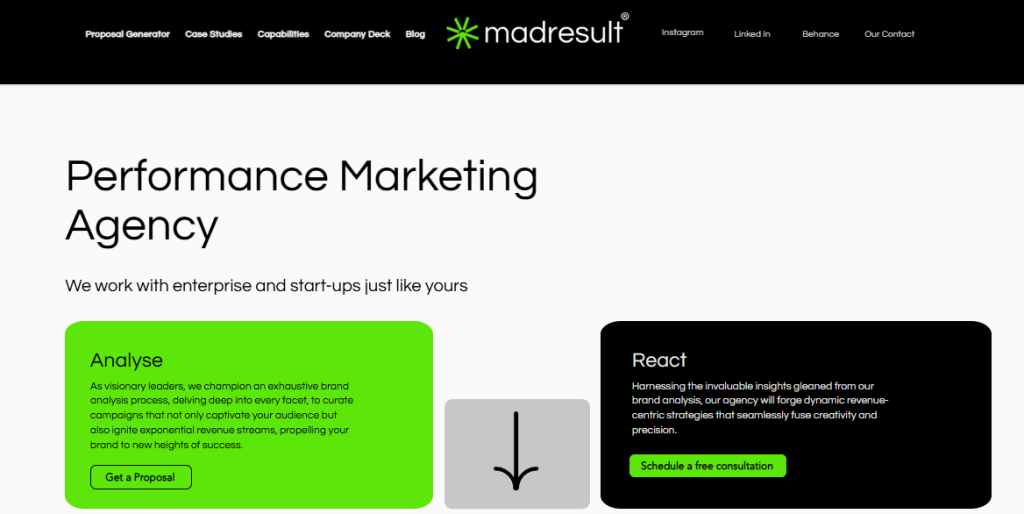
Madresult is a results-driven digital marketing agency that blends creativity, strategy, and technology to deliver measurable business impact. Headquartered in Malad West, Mumbai, the agency has quickly earned a strong reputation as a trusted partner for brands seeking growth in the competitive digital space.
Founded in 2019 by Abhishek Karnik, Madresult has consistently raised the bar in digital marketing—helping brands redefine their presence and achieve unprecedented success. With a portfolio of over 200+ clients, the agency specializes in creating high-performing campaigns that not only drive engagement but also generate real revenue.
Backed by years of expertise, Madresult has delivered remarkable achievements:
- 200 Million+ Ad Impressions — creating an impactful digital footprint.
- 3000+ Successful Ad Campaigns — crafted with precision and creativity.
- 20 Million+ Leads, Purchases & App Installs — fueling client growth at scale.
- 150 Crore+ in Collective Revenue — generated for clients across industries.
Their services span across Performance Marketing, Search Engine Optimization, Digital Marketing, Social Media Marketing, Website Development, and Logo Branding. With a strong focus on SEO, Social Media Marketing, and Logo Branding, Madresult ensures that every campaign aligns with brand objectives while maximizing ROI.
By offering customizable packages, the agency tailors its strategies to fit unique business goals—whether it’s building awareness, scaling lead generation, or boosting conversions.
Location
Malad West, Mumbai, India
Services Offered
- Performance Marketing
- SEO (Search Engine Optimization)
- Digital Marketing
- Social Media Marketing
- Website Development
- Logo Branding
Key Highlights
- Established in 2019
- 200+ clients served
- 200 Million+ ad impressions
- 3000+ ad campaigns
- 20 Million+ leads, purchases & app installs
- 150 Crore+ collective revenue generated for clients
- Specializes in SEO, Social Media Marketing & Logo Branding
- Offers customizable digital marketing packages
Contact Details
📞 Phone: +91 7039515291
📧 Email: [email protected]
🌐 Website: www.madresult.com
Bloom Agency

Bloom Agency is a globally recognized digital marketing agency in Mumbai, celebrated for its expertise in SEO, website development, and full-stack digital strategies. The agency is committed to helping businesses strengthen their online presence, generate targeted traffic, and achieve measurable growth.
With a customer-focused approach, Bloom Agency provides personalized digital solutions that align with unique business goals while ensuring long-term success. From building robust websites to executing powerful SEO campaigns, the agency empowers brands to expand their digital footprint and stay ahead in a competitive marketplace.
Having successfully partnered with 100+ clients, Bloom Agency has established itself as a trusted name in the industry. Their website development services stand out for being visually stunning, user-friendly, and optimized for performance.
Location
Chakala, Andheri (East), Mumbai
Services Offered
- Search Engine Optimization (SEO)
- Digital Marketing
- Website Development
- E-commerce Website Development
Key Highlights
- 100+ clients served
- Specializes in SEO & Website Development
- Offers customizable digital marketing packages
Contact Details
📞 Phone: +91 9324491680
📧 Email: [email protected]
🌐 Website: www.bloomagency.in
Impulse Digital

Impulse Digital goes beyond traditional marketing—delivering real impact through strategic, creative, and data-driven solutions. Headquartered in Thane, the agency is trusted by top brands across Mumbai for solving real business challenges with powerful digital strategies.
Founded in 2014, Impulse Digital is a full-service digital marketing company offering 360° solutions to businesses at all stages—from launching new brands to scaling existing digital presence. Their services include SEO, GEO targeting, SEM, Social Media Marketing, ORM, Content Marketing, Branding, Graphic Design, Employer Branding, and Video Production.
With a passionate team that blends creativity with analytics, they turn digital interactions into loyal customers and ideas into long-term success. Their specialty lies in SEO, GEO, SEM, Employer Branding, Video Production, and Graphic Design—making them a go-to partner for brands seeking impactful campaigns.
Having worked with 100+ clients, Impulse Digital is known for offering customizable packages tailored to specific business goals.
Location: Thane, Mumbai, India
Services Offered
- SEO (Search Engine Optimization)
- GEO Targeting
- SEM (Search Engine Marketing)
- Social Media Marketing
- Online Reputation Management (ORM)
- Content Marketing
- Branding
- Graphic Design
- Employer Branding
- Video Production
Key Highlights
- Established in 2014
- 100+ clients served
- Strong presence in Mumbai
- Specializes in creative + data-driven solutions
- Offers customizable digital marketing packages
Contact Details
📞 Phone: +91 9769285224
📧 Email: [email protected]
🌐 Website: www.theimpulsedigital.com
Capsicum Mediaworks

capsicum mediaworks
Capsicum Mediaworks is a results-driven SEO agency based in Mumbai that has successfully improved online visibility, profits, and sales for businesses and brands. With over a decade of expertise, Capsicum Mediaworks combines technical proficiency, creative insights, and industry-leading innovation to position your brand higher in search engine rankings to achieve sustained success in your business’ digital marketing strategy.
Located in Vile Parle (East), Mumbai, Capsicum Mediaworks is led by co-founders Nirav Dave and Shailendra Dave, who bring a combined experience of more than 30 years in SEO, web design, and digital marketing. With a strong team of SEO specialists, designers, and content experts, we have successfully served over 650 clients across multiple sectors and countries, making us one of the most trusted SEO agencies in Mumbai.
As a dedicated SEO agency in Mumbai, Capsicum Mediaworks is focused on improving your business’s digital and online presence while providing SEO strategies that deliver measurable results to your organization’s goals. Since inception, we have set milestones in transparency, client satisfaction, and performance-based marketing solutions and continue to be a trusted SEO agency in Mumbai.
Location
Vile Parle (East), Mumbai, India
Services Offered
- AI SEO
- Local SEO
- B2B SEO
- E-commerce SEO
- Enterprise SEO
- WordPress SEO
- White-label SEO
Key Highlights
- 10+ years of industry experience
- 650+ clients served globally
- Expert team of SEO professionals and web developers
- Custom strategies for local, eCommerce & enterprise SEO
- Proven success in improving rankings and ROI
Contact Details
Phone: +91 98330 94626
Email: [email protected]
Website: https://capsicummediaworks.com/
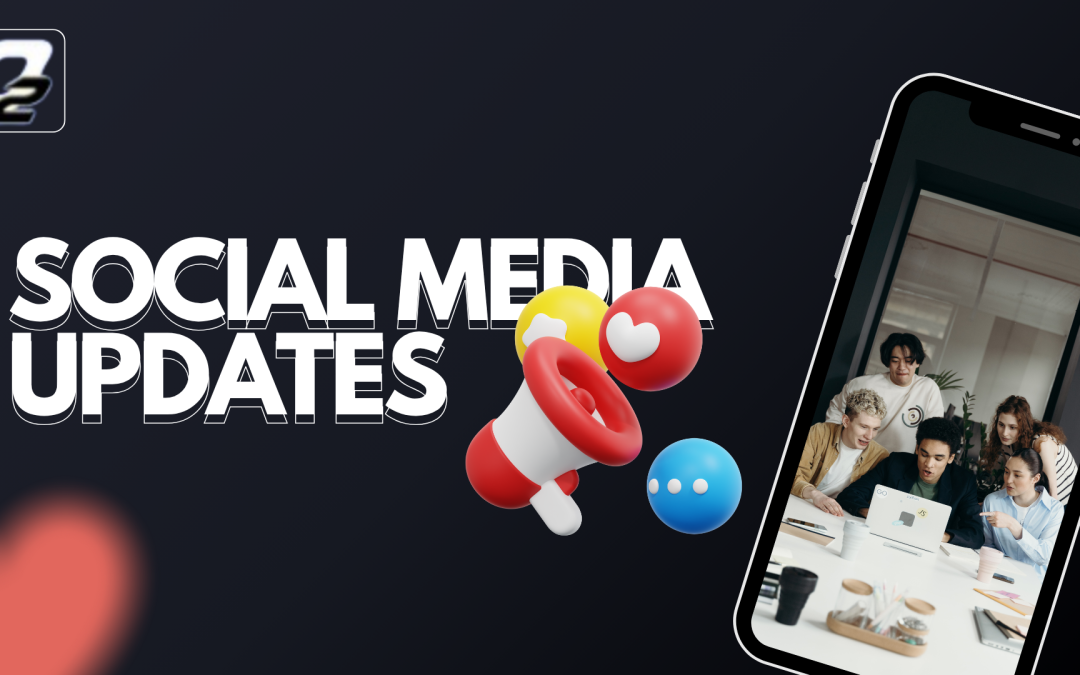
by Shashikanth Heerekar | Jul 19, 2025 | All Things about Marketing
Discover the power of social media with the July 2025 update recap. Find out what’s new, what’s trending, and how to make the most of platform changes for marketers and creators.
July 2025 has introduced game-changing updates across social media platforms, giving marketers and creators new ways to grow their audience, improve engagement, and streamline workflows. From Instagram’s improved search visibility to TikTok’s enhanced creator tools, these updates are reshaping digital strategies. Here’s a detailed breakdown of what’s new and how it impacts you.
Instagram: Boosting Visibility and Business Communication
Instagram took a big step by making public posts from professional accounts appear in Google search results starting July 10, 2025. This means brands and creators can now reach more people organically without relying solely on Instagram’s algorithm. Business accounts also got smarter messaging tools, including auto-translation for DMs (launched July 5) and the ability to schedule responses (released July 15) – making it easier to manage customer interactions efficiently. Meanwhile, Threads (Meta’s Twitter alternative) now supports image sharing in direct messages (added July 18), adding a more visual touch to private conversations.
Key Takeaways:
- Professional account posts are now shown in Google search.
- Auto-translation (July 5) and scheduled responses in DMs
- Threads adds image sharing in private messages
TikTok: Stronger Policies and Smarter Posting Features

TikTok rolled out updated Terms of Service (effective July 25), affecting monetisation, branded content, and creator rewards. Users must accept these terms by July 25 to keep earning from the platform. Creators now have more control with in-app post scheduling (launched July 12), eliminating the need for third-party tools. A new “Footnotes” feature is also being tested (from July 20), allowing users to add fact-checking notes to videos – a move toward reducing misinformation. Plus, songwriters finally get recognition, as creators can now credit them directly in posts (feature added July 8).
Key Takeaways:
- New Terms of Service for monetisation and branded content
- Built-in post scheduling feature
- “Footnotes” fact-checking tool in testing
- Ability to credit songwriters in posts
X (Formerly Twitter): Better Ads and More Engaging Reactions
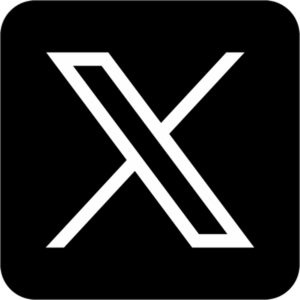
X partnered with AppsFlyer (July 11) to provide advertisers with third-party ad performance tracking, giving marketers more reliable data. The platform is also testing branded watermarks on shared screenshots (from July 17), which could help with tracking and brand visibility. Another exciting update is video reactions – users can now reply to posts with short video clips (launched July 14), making interactions more personal and dynamic.
Key Takeaways:
- Third-party ad tracking via AppsFlyer
- Branded watermarks on screenshots (testing)
LinkedIn: Advanced Analytics for Professionals
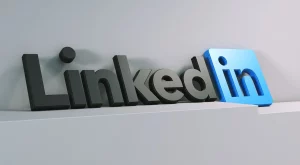
LinkedIn is making it easier for professionals to track their growth with new analytics APIs (released July 7). These tools allow users to monitor follower trends, video performance, and post engagement through third-party apps. The platform also released an updated ad optimisation guide (July 19) to help businesses maximise their return on investment. Additionally, users now get deeper insights into how their posts perform, including how many profile views and new followers each post generates (feature added July 9).
Key Takeaways:
- New analytics APIs for follower and content tracking
- Updated ad optimisation guide
- Detailed post-performance metrics
YouTube: New Discovery Features
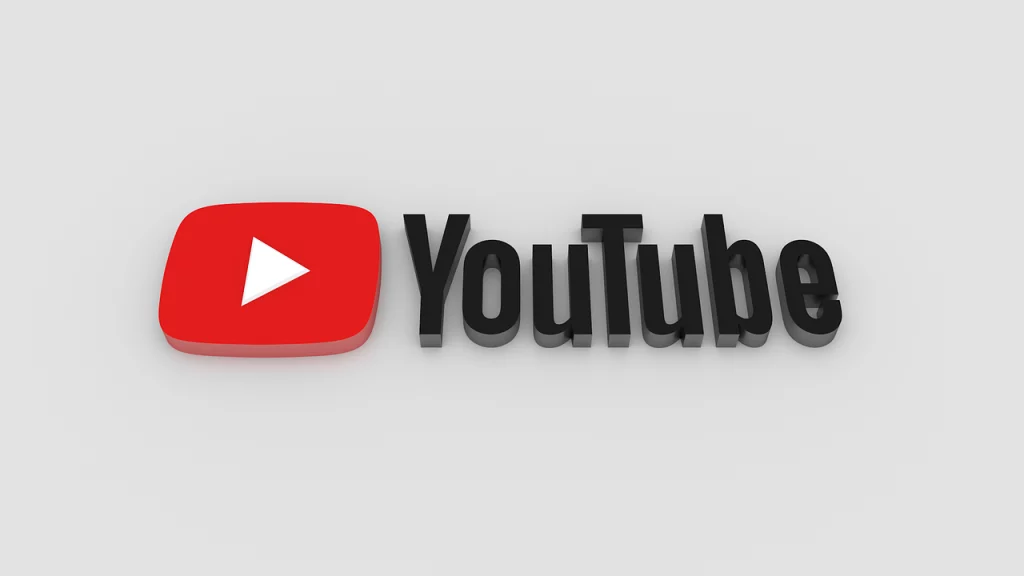
YouTube replaced its “Trending” tab with category-specific Charts on July 13, focusing on music, movies and podcasts. On July 16, they began testing live-stream leaderboards to showcase top broadcasts. These changes help creators gain more targeted visibility. The new system rewards consistent engagement rather than just viral moments.
Key Takeaways:
- “Trending” replaced by category-specific Charts
- Live-stream engagement leaderboards in testing
WhatsApp: Smarter Group Chats

WhatsApp introduced AI-generated chat summaries on July 6 to help users stay updated in busy group chats. The feature automatically highlights key points and decisions from conversations. It’s particularly useful for work groups and large family chats. This update saves time by eliminating the need to scroll through long message histories.
Key Takeaways:
- AI-powered group chat summaries
Snapchat: AR Shopping Experience

Snapchat partnered with American Eagle on July 4 for an innovative AR shopping campaign. Users can now try on clothes virtually through Snap Map before visiting stores. The feature combines augmented reality with location-based marketing. This creates a seamless shopping experience that bridges online browsing and in-store purchases.
Key Takeaways:
- AR shopping campaign with American Eagle
- Snap Map integration for in-store visits
Reddit: Better Audience Insights

Reddit launched its “Community Intelligence” dashboard on July 3, providing brands with valuable audience behaviour data. The new tool helps marketers analyse trends and refine their targeting strategies. Key aspects include demographic breakdowns and engagement patterns. This update makes Reddit an even more powerful platform for community-driven marketing.
Key Takeaways:
- New Community Intelligence platform
- Audience behaviour insights for brands
Final Thoughts
These updates show that social media platforms are focusing on three key areas: better discovery, smarter analytics, and more engaging interactions. For marketers and creators, adapting to these changes early will be crucial for staying ahead. Whether it’s optimising Instagram posts for Google search, using TikTok’s new scheduling tools, or leveraging LinkedIn’s deeper analytics, there are plenty of opportunities to grow your presence in the second half of 2025.
Frequently Asked Questions (FAQs) – July 2025 Social Media Updates
1. How does Instagram’s Google search integration work for professional accounts?
Starting July 10, 2025, professional Instagram accounts’ public posts will appear in Google search results. This update enhances organic discoverability, allowing brands and creators to reach audiences beyond Instagram’s algorithm. Optimising captions, hashtags, and alt text will improve search rankings.
2. What changes did TikTok make to its Terms of Service?
TikTok’s updated Terms of Service (effective July 25, 2025) include stricter monetisation rules, branded content policies, and Creator Fund adjustments. Users must accept these terms to continue earning. The changes aim to improve transparency and compliance for businesses and creators.
3. How does X’s new video reaction feature work?
X (formerly Twitter) introduced video reactions (July 14, 2025), allowing users to reply to posts with short video clips. This makes engagement more dynamic and personal, similar to TikTok’s video replies. Brands can leverage this for interactive campaigns and customer engagement.
4. What benefits does LinkedIn’s new analytics API offer?
LinkedIn’s analytics API (July 7, 2025) provides deeper insights into follower growth, post performance, and video metrics. Businesses can integrate this data with third-party tools for better campaign tracking and audience analysis.
5. How does WhatsApp’s AI chat summary feature work?
Launched on July 6, 2025, WhatsApp’s AI chat summaries automatically extract key discussion points from group chats. It helps users catch up quickly without scrolling through long conversations—ideal for workgroups, event planning, and large family chats.

by Shashikanth Heerekar | Jul 15, 2025 | All Things about Marketing, Uncategorized
Discover the top ten digital marketing agencies in Hyderabad, starting with Oxygenites.com and Extranet Digital, Techdr. Explore expert services, including SEO, social media marketing, and PPC, that help businesses grow online with proven strategies.
Introduction
Hyderabad is rapidly emerging as one of India’s premier digital marketing hubs, providing world-class services across diverse industries. From SEO and social media marketing to paid campaigns and web development, the city is home to several agencies that help brands thrive online. Whether you’re a startup or an established company, partnering with the right digital marketing agency can amplify your growth.
Below is a list of the top ten digital marketing agencies in Hyderabad, starting with one of the pioneers in the industry—Oxygenites.com.
Oxygen

OXYGEN
With over 13 years of experience, Oxygenites.com has emerged as a trailblazer in the digital marketing space. The agency provides a full suite of services, including SEO, PPC, social media marketing, web development, content marketing, graphic design, and branding solutions. Their data-driven strategies and client-centric approach make them a go-to agency for businesses of all sizes.
What sets Oxygenites apart is their commitment to results. They combine technical expertise with creative storytelling to build powerful digital presences. Whether it’s ranking on search engines or running impactful ad campaigns, Oxygenites consistently delivers measurable growth. Their long-standing success and trusted reputation make them a top choice among digital marketing agencies in Hyderabad.
Contact Details
Zenoids

Zenoids is a full-service digital solutions company that helps businesses enhance their digital presence through a balanced mix of technology, marketing, and creative services.
The company specializes in digital experience solutions such as ERP development, mobile app development, website development, business emails, Odoo development, and WordPress development to support scalable and efficient business operations.
Its marketing operations include digital marketing, search engine optimization (SEO), social media marketing, WhatsApp marketing, and email marketing to improve online visibility and customer engagement.
In addition, Zenoids offers creative services including online branding, UI/UX design, web designing, graphic design, and video editing, enabling brands to communicate effectively and deliver impactful digital experiences across platforms.
Contact details
Phone number: +91 (91) 600 66913,
Email: [email protected]
website: https://zenoids.com/
GrowthPixel

GrowthPixel
GrowthPixel is an award-winning healthcare digital marketing agency in Hyderabad, specializing in marketing solutions for doctors, clinics, and hospitals. They adopt a data-driven approach and offer services such as healthcare SEO, AI SEO, Google My Business, graphic design, website design and development, PPC, social media marketing, video ads, and content writing for healthcare professionals.
What sets them apart from the rest is their transparent reporting system. They are available for a quick call with clients whenever needed. Apart from this, they use the latest automation tools, such as Pabbly and N8N, to send inquiries to doctors over WhatsApp and email as soon as someone inquires about their services.
Digital marketing for doctors isn’t an easy task due to ethical considerations. However, Growthpixel has consistently achieved success in this area, as evidenced by its extensive roster of clients and the video testimonials shared on their website.
Contact Details
Absolute Online Web

Absolute online web
At Absolute Online Web, we help you build a strong and professional online presence through customized website design, SEO, and digital marketing services. Whether you need a sleek, responsive website or want to drive traffic through search engine visibility, we tailor every solution to fit your goals. From Google Ads to social media marketing, we ensure your brand reaches the right audience effectively.
You can count on us for high-quality, results-driven services delivered on time and within budget. Whether you’re launching a new business or looking to grow online, Absolute Online Web (www.aoplweb.com) is here to support your digital journey every step of the way.
Contact Details
TechVint – Your Growth Partner for Digital Success

Techvint
TechVint is a full-service digital marketing and web development agency based in Hyderabad, India, offering end-to-end solutions that drive measurable results. With over 8 years of industry experience, we specialize in delivering performance-driven marketing tailored to meet the unique needs of each client, from startups to Fortune 500 companies.
Our core services include:
- Search Engine Optimization (SEO): We help businesses rank higher on Google with white-hat SEO strategies focused on high-conversion keywords, technical SEO, and link building.
- Social Media Marketing (SMM): We manage and scale brand presence across platforms like Instagram, Facebook, and LinkedIn with creative campaigns and content strategy.
- Google Ads & Paid Campaigns: Our performance marketing team creates high-ROI ad campaigns using Google Ads, YouTube Ads, and retargeting strategies.
- Website Design & Development: We craft responsive, SEO-friendly websites on WordPress, Shopify, and custom stacks, optimized for performance and user experience.
- Lead Generation: Proven techniques across multiple platforms to deliver quality leads that convert.
- Creative Services: From branding, logo design, and UI/UX to content writing and video production — we create visuals and content that resonate.
- Artist Management & Personal Branding: For influencers, DJs, and celebrities, we offer digital branding, website creation, PR, and SEO.
With clients across India, USA, and the Middle East — including Builders9, FPT India, Kidzonia, Vasavi Group, and more — TechVint is recognized for delivering results that matter.
If you’re looking for a digital partner that understands growth, performance, and brand storytelling, TechVint is your answer.
Contact Details
webbingprotechnologies

webbingProTechnologies
Webbing Pro Technologies offers a complete suite of digital marketing services designed to help businesses achieve their online growth goals. Their expertise includes SEO, social media strategies, content creation, and UI/UX designing, all focused on creating engaging digital experiences.
By combining website and app development with impactful marketing techniques, they provide solutions that enhance brand visibility, attract quality leads, and support sustainable digital success, making them a trusted partner for businesses looking to grow in the competitive online space.
Contact Details
XLENT Digital Solutions

Xlent digital solutions
XLENT Digital Solutions is a professional Digital Marketing Agency In Hyderabad and web development company dedicated to helping businesses enhance their online presence and achieve measurable growth. The company offers a wide range of services, including web designing and development, search engine optimization (SEO), pay-per-click (PPC) advertising, and custom app development to improve visibility and drive targeted traffic.
Their social media marketing services help brands connect with audiences across multiple platforms, while content marketing focuses on creating engaging and impactful brand stories.
Their SEO services helped big e-commerce players to reach a higher number on organic sales and establish their brand presence on google networks.
Contact Details
KBK Business Solutions

KBK business solutions
KBK Business Solutions is a professional digital marketing agency and technology company offering a complete range of digital, software, and web development services to help businesses grow in today’s competitive environment. With a focus on innovation, creativity, and performance, KBK Business Solutions delivers tailored solutions that empower brands to achieve measurable success.
Recognized as the best mobile app development company in Hyderabad, their digital marketing services include SEO services, local SEO, technical SEO, PPC, social media marketing, email marketing, content writing, and SMS marketing, ensuring businesses reach their target audience effectively. In the field of software development, the company offers expertise in Java, CodeIgniter, Laravel, CakePHP, and software testing, along with robust e-commerce portal development using OpenCart, WooCommerce, and Magento.
KBK Business Solutions also excels in web development, providing CMS web development, WordPress, Drupal, and Joomla solutions. Their UI/UX web design services cover static websites, dynamic websites, and landing pages to deliver user-friendly and visually appealing interfaces. In addition, their design services include graphic design, logo design, letterhead, visiting cards, social media posters, and brochure/leaflet/pamphlet creation.
They also specialize in video making, producing ad films, YouTube ads, product videos, and corporate films to enhance brand storytelling and engagement. With a comprehensive suite of digital, design, and development services, KBK Business Solutions stands as a trusted partner for businesses looking to elevate their digital presence and achieve long-term growth.
Contact Details
Amplus Solutions

Amplussolutions
Amplus Solutions is a leading technology and digital marketing company dedicated to delivering innovative and customized solutions that help businesses build a strong online presence and achieve measurable growth. With a focus on quality, creativity, and advanced technology, Amplus Solutions provides end-to-end services that cater to diverse business needs across industries.
Their core offerings include web designing and web development, creating visually appealing, user-friendly, and high-performing websites tailored to client goals. The company also specializes in software development and mobile application development, delivering scalable and efficient software designed for modern businesses.
Amplus Solutions’ digital marketing services empower brands to grow online through strategic campaigns and innovative techniques. They also provide web hosting services to ensure websites run smoothly and efficiently. Additionally, their bulk SMS and e-commerce solutions help businesses engage customers directly and expand their online sales reach.
The company’s expertise extends to SEO and content services, enabling businesses to enhance their visibility and brand communication across digital and offline platforms. Furthermore, Amplus Solutions offers IP services to support clients in maintaining secure and reliable digital infrastructures.
With its comprehensive suite of services and a commitment to excellence, Amplus Solutions continues to be a trusted partner for businesses seeking to enhance their online presence and achieve sustainable success in the digital era.
Contact Details
Rish Digital Media

Rish digital media
Rish Digital Media is a results-driven digital marketing agency in Hyderabad, committed to helping businesses strengthen their online presence with strategic and performance-focused solutions. We specialize in digital marketing, SEO services, Google Ads (PPC), and web designing, offering customized strategies that enhance visibility, engagement, and lead generation. Our goal is to ensure businesses attract the right audience, rank higher on search engines, and build a strong digital footprint across all platforms.
With expertise in search engine optimization, paid advertising, and professional website design, Rish Digital Media helps brands achieve sustainable digital success. Our SEO solutions improve organic traffic and keyword rankings, while our Google Ads campaigns deliver maximum ROI through targeted and optimized ad strategies. Combined with modern, responsive, and user-friendly website designs, we provide businesses with a complete digital ecosystem that boosts credibility, drives conversions, and strengthens overall market positioning.
Contact Details
LaGran

Lagran
LaGran is a versatile digital solutions company that supports businesses across marketing, technology, design, and staffing.
Their digital marketing services help clients boost online visibility, drive engagement, and amplify brand impact. In addition, LaGran offers robust tech solutions, delivering custom software and IT services tailored to business needs.
Their designing team specializes in creating visually appealing and user-centric interfaces, whether for web or mobile. Beyond technical and creative offerings, LaGran also provides staffing solutions, helping organizations build strong teams with the right talent for growth.
Building on its multi-domain expertise, LaGran continues to position itself as a reliable partner for companies aiming to scale efficiently. The company focuses on understanding each client’s unique challenges and delivering results-driven solutions that enhance productivity, streamline operations, and elevate brand value.
With a commitment to innovation and client satisfaction, LaGran ensures businesses receive end-to-end support from strategy and execution to ongoing management—making it a trusted choice for organizations seeking long-term digital and operational growth.
Contact Details
Rediger Digitech

redigerit
Rediger Digitech is a dynamic and growth-focused digital solutions company dedicated to helping businesses build a strong online presence and achieve consistent results. The company offers a wide range of service
es designed to support both technical and marketing needs. Their core offerings include web development, delivering high-quality and user-friendly websites tailored to business goals, and SEO services aimed at improving search rankings and increasing organic traffic. Rediger IT also specializes in social media marketing (SMM) to boost brand awareness and engagement across major platforms, as well as Google Ads management to drive targeted traffic and maximize conversions.
In addition, the company provides email marketing services to strengthen customer communication, lead generation solutions to help businesses attract potential clients, and app development services for creating innovative and functional mobile applications. With this comprehensive service portfolio, Rediger IT empowers businesses to grow digitally and stay ahead in a competitive market.
Contact Details
Kalyan Chandra

Kalyan chandra
Kalyan Chandra is a professional digital marketing consultant dedicated to helping businesses grow through strategic, data-driven, and results-oriented marketing solutions. The company provides a comprehensive suite of services designed to enhance brand visibility, improve customer engagement, and drive measurable business outcomes. Their offerings include digital marketing consulting and PR (public relations) consulting services, helping brands build a strong reputation both online and offline.
They specialize in web analytics and business intelligence to provide deep insights that guide smarter decision-making. Their social media marketing services help businesses increase engagement and reach across major social platforms, while their expert SEO services improve website rankings and organic traffic. Kalyan Chandra also offers Google Ads and pay-per-click (PPC) advertising to generate high-quality leads quickly and efficiently.
Additionally, the company provides advanced marketing automation support through Marketo consulting and Pardot implementation, enabling businesses to streamline their marketing workflows. They also offer Wikipedia page creation services to strengthen brand authority, along with email marketing and influencer marketing services to expand reach and build meaningful customer relationships. Through this diverse range of services, Kalyan Chandra empowers businesses to scale with confidence in today’s competitive digital landscape.
Contact Details
MBL Technologies
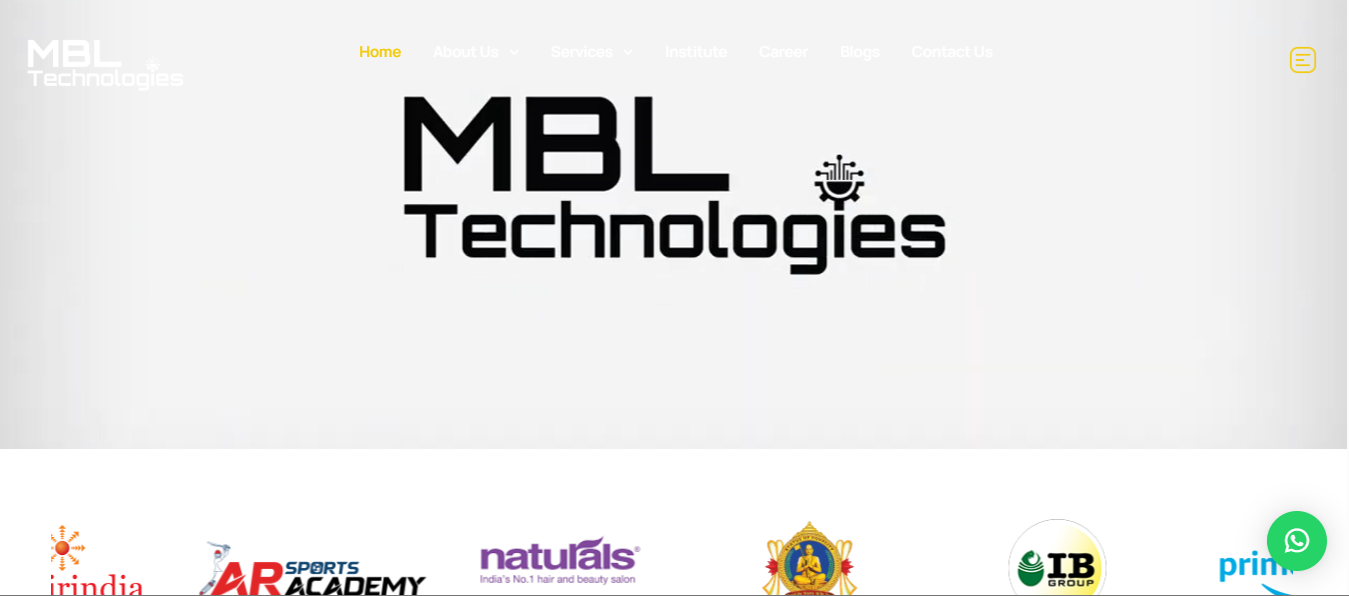
MBL technologies
MBL Technologies is a digital solutions company dedicated to helping businesses grow online by offering a wide range of services, including website development, social media management, content creation, graphic designing, influencer marketing, SEO services, application development, and paid ads. Their focus is on delivering creative, effective, and result-driven solutions that enhance brand presence, attract the right audience, and support overall business growth in the digital space.
They also specialize in social media management to help businesses build engagement, maintain consistent online activity, and connect with their target audience across major platforms. MBL Technologies provides content creation services, delivering high-quality and engaging content that enhances brand communication. Their graphic designing services ensure impactful visuals that elevate brand identity, while their influencer marketing solutions help brands collaborate with relevant creators to expand their reach.
Contact Details
The NeedleAds

The NeedleAds
The NeedleAds is a trusted digital marketing agency that provides comprehensive solutions to help businesses enhance their online visibility and performance. Their services include SEO services, website design, website development, and website maintenance, ensuring strong and well-optimized digital foundations.
They also specialize in mobile application development, Google Ads, and local SEO services to help businesses reach targeted audiences effectively. Additionally, The Needles offers email marketing and social media marketing to build engagement, generate leads, and strengthen brand presence across digital platforms.
Contact Details
FutureGenApps
FutureGenApps is a trusted name in web design and development, known for creating stunning and responsive websites for businesses of all sizes. As a website designing company in Hyderabad, we provide complete solutions that include web designing, development, and Digital Marketing Services to help brands grow online.
Our skilled team specializes in Website Designing, Development, SEO Services, and Digital Marketing Services. We use the latest technologies like WordPress, PHP, Laravel, and more to build dynamic and functional websites that meet every business requirement. Our mission is to enhance digital visibility and drive long-term success for every client.
At FutureGenApps, we focus on turning ideas into reality. With on-time delivery, long-term support, and 100% satisfaction, we aim to create professional websites and offer result-driven Digital Marketing Services across Hyderabad and beyond.
Contact Details
Sieve Softech
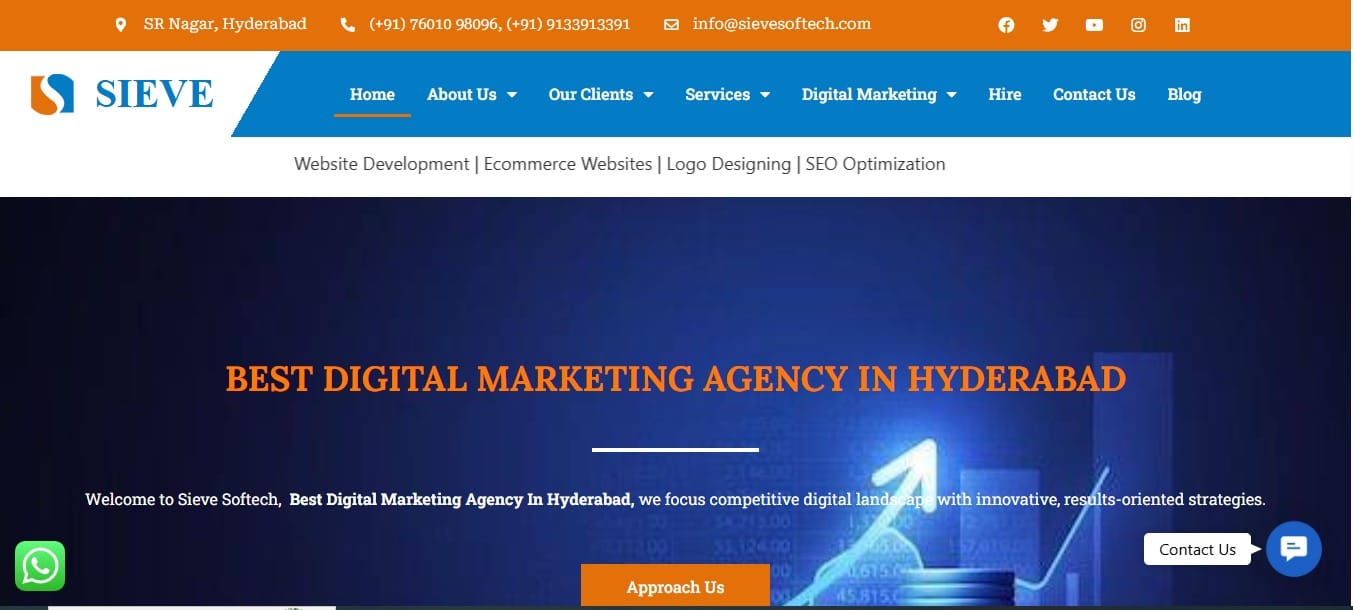
Sieve
Sieve Softech is a trusted digital marketing agency in Hyderabad dedicated to helping businesses strengthen their online presence and achieve measurable growth. The company offers a wide range of digital marketing services, including SEO, social media marketing, PPC, and content marketing, all tailored to meet each client’s unique goals.
With a focus on strategy and innovation, Sieve Softech creates customized campaigns that enhance visibility, increase engagement, and build brand credibility. Their team of experts uses data-driven methods to ensure every marketing effort delivers impactful and lasting results.
What truly sets Sieve Softech apart is its client-first approach and commitment to excellence. By combining creativity, technology, and proven techniques, they help businesses connect with their audience effectively and grow in the ever-changing digital world.
Contact Details
Phone: +91 7601 098 096
Email: [email protected]
website: https://sievesoftech.com/
Conclusion
Hyderabad has established itself as a thriving hub for digital marketing, offering a diverse range of services that empower businesses to build a strong online presence. From SEO and social media management to paid advertising, content marketing, and web development, the city’s agencies cater to brands seeking measurable growth and digital transformation. With a focus on innovation, performance, and data-driven strategies, these digital marketing experts help businesses stay competitive in an ever-evolving online landscape, making Hyderabad a preferred destination for brands looking to expand their reach and achieve sustainable success.
FAQS
1. Digital marketing agencies in Hyderabad offer what essential services?
A. Most digital marketing agencies in Hyderabad provide services like SEO, social media marketing, pay-per-click advertising (PPC), content marketing, email marketing, and web development to enhance online visibility and business growth.
2. How can a digital marketing agency help my business grow?
A. A digital marketing agency can help generate more leads, improve search engine rankings, boost brand awareness, and increase sales through tailored online marketing strategies.
3. Are digital marketing services suitable for small businesses or startups?
A. Yes, many agencies offer scalable and affordable digital marketing packages that are perfect for startups and small businesses looking to build their online presence.
4. What industries do digital marketing agencies in Hyderabad usually serve?
A. They serve a wide range of industries, including healthcare, e-commerce, education, real estate, IT, hospitality, and local businesses, offering customized solutions based on business goals.
5. What makes Hyderabad a good city for digital marketing services?
A. Hyderabad is a major tech hub in India, with access to skilled professionals, advanced technology, and a growing digital ecosystem—making it a hotspot for quality marketing services.































